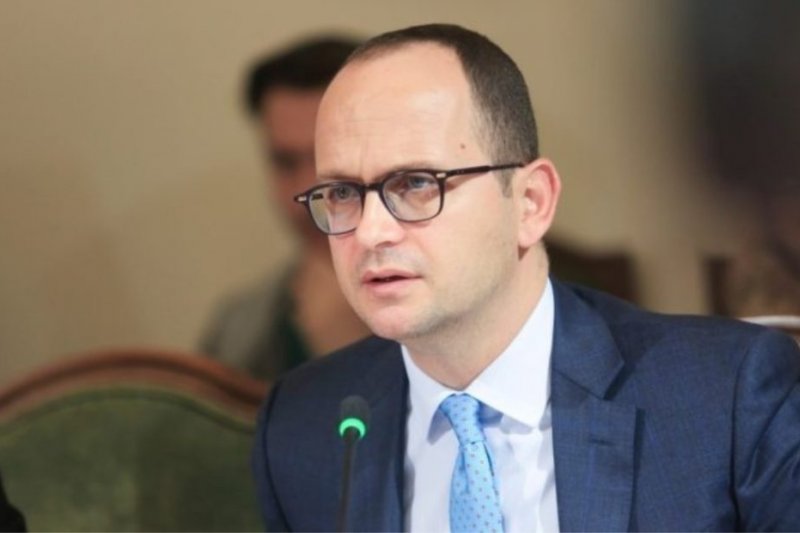Geography of Animosity
Clashes over car license plates on the Kosovo-Serbia border and tensions in northern Kosovo instigated by Belgrade, are a clear indication of the impasse of EU enlargement policy, as well as its reluctance to articulate unequivocally “mutual recognition" as the final goal of the dialogue between Kosovo and Serbia.
More than car plates, this clash brought back to the scene the need to exercise reciprocity as a basis for building interstate relations. The unfinished Serbia-Kosovo conflict, though not the only one in the Western Balkans, reflects what Vladimir Gligorov in 2008 defined as the "geography of animosity".
Unfortunately, this is the stage the region is in, almost two decades after the EU leaders' 2003 pledges in Thessaloniki for the region's EU membership, and just days away from the Brdo pri Cranju Summit between the EU and the Western Balkans. Throughout the dialogue process, in the hope that Serbia would recognize Kosovo, the construction of a system based on the power of one man has been tolerated in Serbia. When it comes to the alignment of the foreign and security policy, Serbia has been allowed to "sit in different chairs".
It has built a military partnership with Russia and a trade partnership with Russia and China. At the same time, it is the only country in the Western Balkans integrated into the EU economic value chains. Due to the weakness of the EU, coupled with a lack of unity, Serbia has also been tolerated in its statements and actions aimed at revising history.
Moreover, Serbia has managed to nurture alliances with few EU member states, which gravitate contrary to the principles and values ​​embodied by the EU. Although the main instigator of the wars that led to the break-up of the former Yugoslavia in the early 1990s, Serbia has managed to keep the region in an almost permanent state of tension, while hypocritically playing the card of regional cooperation but never accepting the equality and sovereign rights of the participating states in the region. The dominant conflict in the region over the last century between Serbs and Croats seems to have been addressed in a European way when Croatia was accepted into EU.
That has transformed the "geography of animosity" from a Serbo-Croat conflict to a conflict between Serbia and other countries in the region. Thus, Serbia interprets the process of "normalization of relations with Kosovo" mediated by the EU, as negotiations for the status of Kosovo, although most countries in the democratic world and the International Court of Justice have sealed Kosovo's independence. Through the influence of the Serbian Orthodox Church, it fundamentally opposes the existence of Montenegro; systematically undermines the functionality of Bosnia and Herzegovina; denies the existence of the Orthodox Church of North Macedonia as an independent entity.
Albania, although a country with a Mediterranean approach and never part of the former Yugoslavia, finds itself involved in the "geography of animosity" in the Western Balkans, due to its special relationship with Kosovo. It is clear that the "geography of animosity" affects the economic weakness of the region and ita potential to unleash positive energy. According to a study by the Westminister Foundation for Democracy, the countries of the region lose about 5.5 billion EUR a year, due to youth migration and educational spending that are not being returned. While the lack of serious investments by multinational companies, as is the case of the Visegrad countries, increases the development gap of the region with the EU.
Bearing in mind the fact that EU membership process of the countries of the region has stalled, the EU reaction is rather anemic. In the above mentioned disputes and conflicts, the EU prefers to address both "parties", although one party is always the same. On the other hand, the EU remains an irreplaceable political and economic partner in the region. Therefore, the "parties" seek the mediation of the EU to guarantee the agreements signed with its mediation, or to find a common language.
The appearance of the ambassador and officials of the Russian Ministry of Defense alongside the Serbian Minister of Defense and the Chief of Army during the inspection of Serbian troops on the border with Kosovo brought on the surface another dimension of the situation on the ground. It should be noted that KFOR has a clear mandate regarding the guarantee of the territorial integrity of Kosovo and especially in its north. Consequently, attempts to stage scenarios similar to Ukraine, Moldova or the Caucasus have no chance of being repeated in this corner of Europe. However, to deter any future behavior, NATO countries in the region, including Croatia, should address this regional security-related issue in NATO fora, as the Baltic’s or Poles do whenever they face similar challenges. This requires a clear strategic concept that is built within NATO, in cooperation with other allies. While Serbia may need more time to accept the irreversible reality, it is important that the EU and NATO do not lose their investment in the region. The synergy between the EU "carrot" and the US "stick" is a necessity for transforming the "geography of animosity" into a geography of peace and prosperity within the EU.













